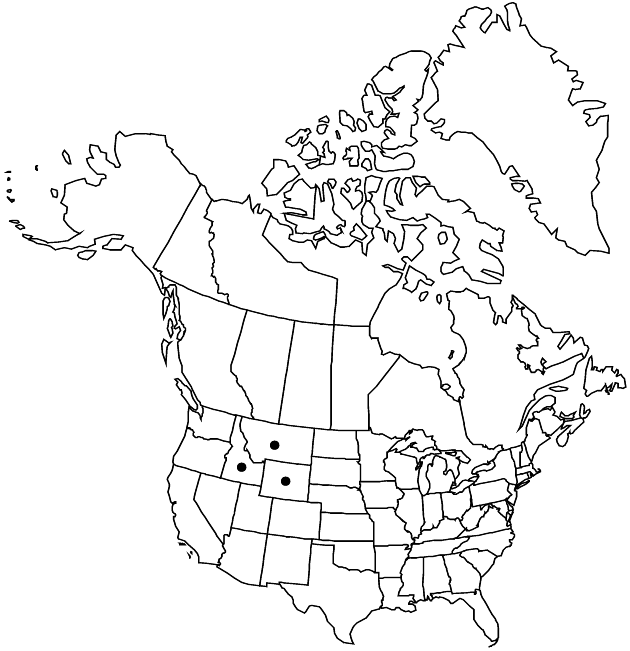Difference between revisions of "Erigeron tweedyi"
Bot. Gaz. 13: 17. 1888.
FNA>Volume Importer |
FNA>Volume Importer |
||
| Line 47: | Line 47: | ||
|publication year=1888 | |publication year=1888 | ||
|special status= | |special status= | ||
| − | |source xml=https://jpend@bitbucket.org/aafc-mbb/fna-data-curation.git/src/ | + | |source xml=https://jpend@bitbucket.org/aafc-mbb/fna-data-curation.git/src/8f726806613d60c220dc4493de13607dd3150896/coarse_grained_fna_xml/V19-20-21/V20_654.xml |
|tribe=Asteraceae tribe Astereae | |tribe=Asteraceae tribe Astereae | ||
|genus=Erigeron | |genus=Erigeron | ||
Revision as of 15:25, 18 September 2019
Perennials, 4–20 cm; taprooted, caudices multicipital crowns or branches relatively short and thick. Stems erect to ascending or decumbent-prostrate, densely strigose (hairs relatively thin), eglandular. Leaves basal (persistent) and cauline; basal (silvery) blades spatulate, broadly elliptic, 50–250 × 5–13 mm, cauline abruptly reduced distally, margins entire, faces densely strigoso-sericeous (hairs gray-white), eglandular. Heads 1–4. Involucres 4–6 × 9–14 mm. Phyllaries in 3–4 series, finely hirsuto-strigose, sparsely minutely glandular. Ray florets 20–50; corollas blue to purple, sometimes white, 5–9 mm, laminae not coiling or reflexing. Disc corollas 3.1–4.3 mm. Cypselae 2–2.5 mm, 2-nerved, faces strigoso-sericeous; pappi: outer of setae, inner of 20–30 bristles.
Phenology: Flowering Jun–Aug.
Habitat: Clay hills, rocky slopes, limestone taluses, shale outcrops, sagebrush-grasslands
Elevation: (1300–)1600–3000 m
Distribution

Idaho, Mont., Wyo.
Discussion
Selected References
None.